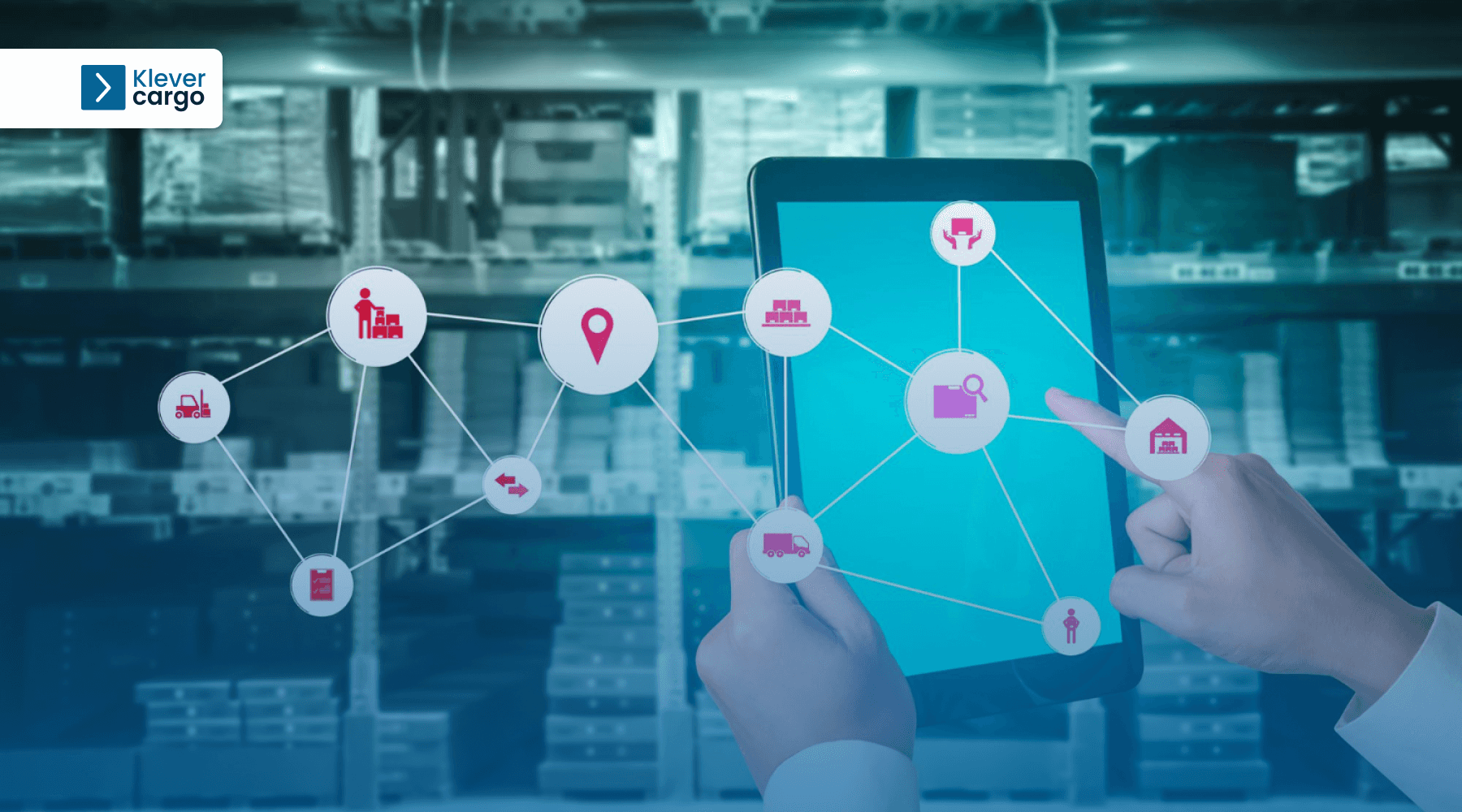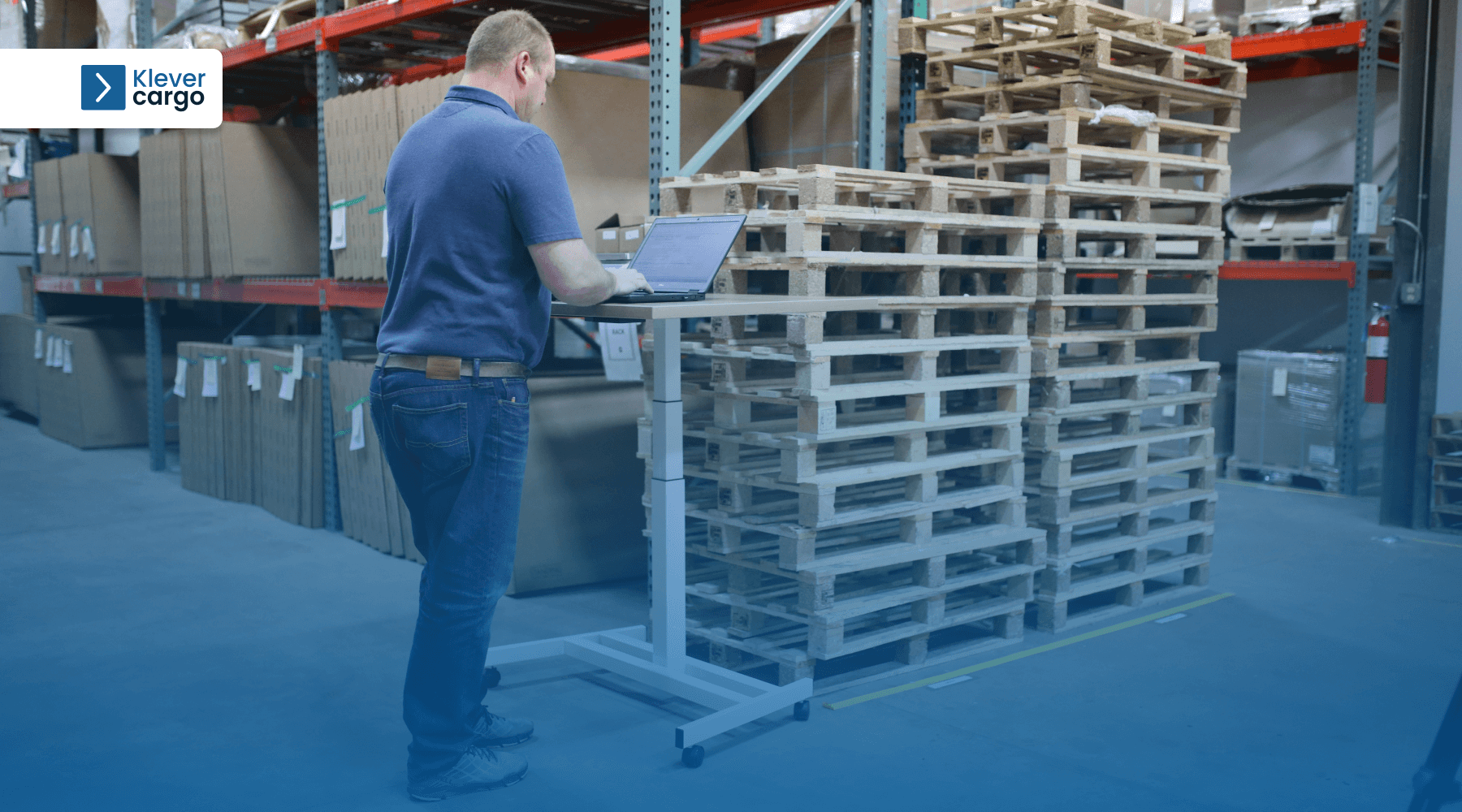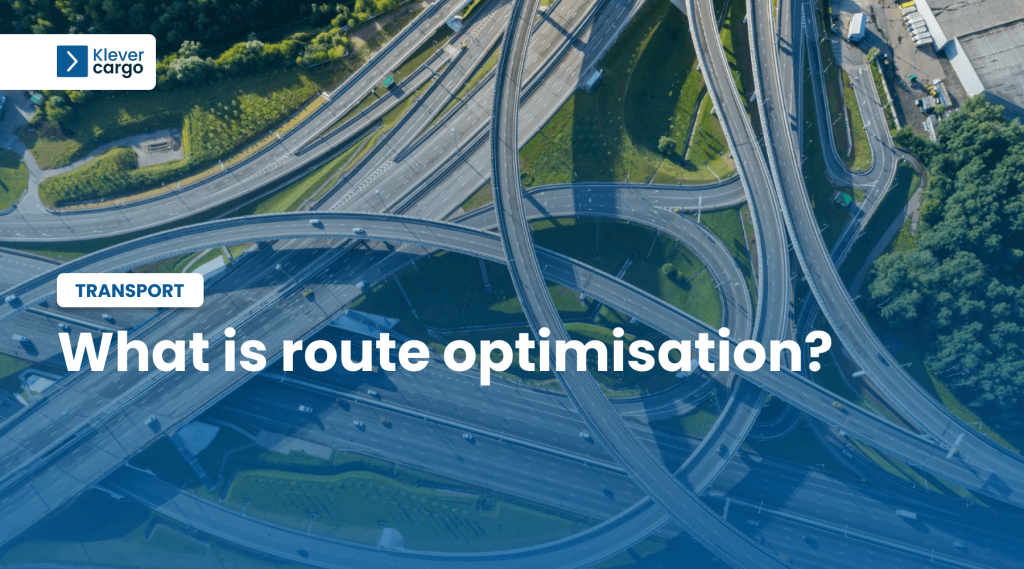The supply chain is under tremendous pressure when high supply demand exists. As a result, the supply chain may struggle to keep up with demand, leading to shortages or delays in delivery. This can lead to lost sales, reduced customer satisfaction, and increased costs.
This case scenario was especially visible during the pandemic period. The coronavirus pandemic damaged global supply chains, which caused various challenges for the freight industry. Lockdowns and social distancing measures led to an increased demand for e-commerce.
Because of that, digitalisation was crucial for continuing freight operations. Digital technologies allowed freight companies to optimise routes and reduce delivery times. In addition, digitalisation managed to improve customer communication without needing physical contact. The pandemic displayed the importance of digitalisation in the freight industry. Hence, many companies improved their digital transformation efforts.
What is a digital supply chain?

A digital supply chain is a system that uses technology to manage goods, services, and information.
It was necessary to include specific tools and procedures to digitalise that process. That’s why companies switched to using digital tools, such as: Internet of Things (IoT), big data analytics, and artificial intelligence (AI).
These methods enabled real-time visibility into inventory levels and shipment tracking. With this automation, collaboration among partners became much easier and more efficient.
A digital supply chain made significant changes in the transportation industry. For example, a shipping company can use IoT devices to track the cargo’s location, temperature, and humidity in real time. With a traditional supply chain, real-time tracking wasn’t possible.
This information is transferred to a digital platform. From there, the shipping company and its customers track the shipment’s progress. By doing so, they’ll ensure that they are transporting cargo in optimal conditions.
With AI algorithms, a transportation company can significantly improve its profits. Those algorithms can help them optimise the route, transportation mode, and delivery times. Ultimately, the cargo will always arrive on time at the lowest possible cost.
Companies can use big data analytics to provide insights into supply chain performance. Those analytics make it easy to identify areas for improvement.
Also, the digital platform enables the shipping company to collaborate with its partners. The goal of the collaboration is to streamline the supply chain and reduce delays and errors. The shipping company can improve its efficiency by using a digital supply chain. Furthermore, it can reduce costs and provide better customer service.
Difference between traditional and digital supply chains

The main difference between traditional and digital supply chains is the use of technology.
Traditional supply chains rely on manual processes and paper-based documentation. On the other hand, digital supply chains use the mentioned digital tools like the IoT and AI. These tools allow them to optimise and automate supply chain processes.
In traditional supply chains, communication is carried through phone calls, emails, and fax. Those methods can be time-consuming and mistake-prone. With a digital supply chain, you get to use real-time data, which speeds up the process and leaves no room for errors.
And with advanced analytics, the collaboration between supply chain partners improves drastically.
One of the main issues with a traditional supply chain was its slow response nature. Companies that aren’t prepared for inevitable changes need more time to react.
With real-time updates, digital supply chains enable businesses to respond to changes quickly. Those quick reactions reduce lead times and improve their overall efficiency. They also provide better insights into supply chain performance. That allows companies to make data-driven decisions and improve their operations.
8 key elements of a digital supply chain
Planning and execution

Planning and execution are crucial because they ensure the production and delivery of a product on time. They help businesses to manage their inventory efficiently, reduce waste, and avoid stockouts.
Technology in planning and execution can automate processes, increase efficiency, and reduce costs. Effective planning and execution can also help identify supply chain problems. That quick identification allows businesses to take proactive measures to solve them.
Logistics
Organised logistics ensure the efficiency of product delivery. They involve the management of transportation, warehousing, and distribution.
With a reliable platform like KleverCargo, you can quickly turn complex paperwork and logistic operations into automated, straightforward processes. They also help to minimise costs, reduce lead times, and improve customer satisfaction.
Technology 4.0
Technology 4.0 refers to the fourth industrial revolution. Its goal is to integrate digital technologies into all aspects of business operations. Technology 4.0 enables real-time visibility and control over the supply chain.
You can access advanced analytics and make more precise decisions by utilising it. It also eases collaboration among supply chain partners through digital platforms. It’s essential for building agile, resilient, and customer-oriented digital supply chains.
Warehousing improvement
Another crucial part of a digital supply chain is warehousing improvement. It enables faster and more accurate order management. By using automation, robotics, and sensors, warehouses can optimise their operations error-free.
With a reliable warehousing platform, you connect with a vast network of shippers and transporters whom you can contact with a click of a button. You can easily access and manage your storage capacity. Furthermore, you can keep all your documentation in a single place.
Upgrading your workflow will make you aware of your product’s availability. With that, you can quickly provide updates to your customers. In addition, warehouses can leverage data analytics to identify market trends. By doing so, you’ll understand demand better and be one step ahead of the competition.
Management

With effective management, you’ll ensure that all supply chain activities are correctly arranged. This includes activities like planning and monitoring to achieve flawless execution.
With proper management processes, supply chain managers can ensure optimised inventory levels. By doing so, the transportation process has no setbacks. Of course, that results in completed orders that are delivered on time.
Additionally, digital technologies enable managers to make data-driven decisions. For example, estimates can be a good approach, but precise data will always be more stable. Good management also enhances collaboration between supply chain partners.
B2C
B2C (business-to-consumer) is a direct connection between a company and its customers. Digitalisation in B2C is visible through e-commerce platforms, mobile apps, and social media. With those, companies can create a personalised shopping experience for their customers. With these technologies, companies will increase customer loyalty, turning into recurring clients.
People who are satisfied with a particular product or service won’t hesitate to recommend them to others. Therefore, by utilising digital technologies, you get free advertising through recommendations.
Furthermore, B2C transactions generate valuable data. Companies can use it to optimise their supply chain operations and improve their products and services. By focusing on B2C, companies can build strong customer relationships. Naturally, that results in staying competitive in the market.
Analytics
This is another vital step for digitalising the supply chain. Analytics provide valuable insights into supply chain operations.
For example, companies can collect data from sensors or GPS trackers. They can then analyse that data to find patterns in demand. This allows them to adjust inventory levels and reduce costs.
Analytics can also be used to monitor supplier performance and identify potential problems. By leveraging analytics, companies can gain a competitive advantage. Furthermore, they can create a responsive supply chain. That chain can quickly adapt to changes in demand and market conditions.
Digital supply chain enablers
Digital supply chain enablers provide the necessary tools to support digital transformation. Those enablers are:
- cloud computing;
- the Internet of Things (IoT);
- blockchain.
They enable real-time data sharing and add transparency across the supply chain. This leads to increased efficiency, reduced costs, and improved customer satisfaction.
Enablers like artificial intelligence and machine learning also provide analytics and automation. Those tools help with improving supply chain operations. Companies can create a more responsive and competitive supply chain with these enablers. That aids in meeting the demands of today’s digital economy.
Digital supply chain advantages

Improved visibility
Improved visibility brings the advantage of having real-time access to data and insights. This makes monitoring the inventory and the commodities extremely easy. As a result, businesses can quickly make decisions and the needed adjustments.
It can also help minimise risks of disorganisation in the supply chain or quality issues. Having better visibility can help businesses reduce costs while increasing revenue.
Increased efficiency
A digital supply chain can drastically increase a company’s efficiency. The secret is automating processes you’d otherwise have to do by hand. Human error is a standard part of every business. But with automation, those manual errors become nonexistent.
Furthermore, automation benefits transportation, meaning faster transport with lower operating costs. Access to a proper load board allows you to easily manage every aspect of the transport process. You can avoid cold calls and emails and substitute them with a comprehensive solution. You can set up routes, make bids and keep track of documentation, all from a single platform.
Enhanced collaboration
A digital supply chain also offers the benefit of enhancing collaboration. It allows all stakeholders to easily communicate and share data, regardless of location. With better coordination across the supply chain, lead times will reduce. And the better the lead times, the happier the customers.
Collaborative platforms can also simplify sharing of best practices. With those platforms, everything moves quickly and easily. But, of course, that also applies to potential problems and setbacks. Everything can be notified and handled immediately.
Better customer service
A digital supply chain can improve customer service by providing real-time information. Inventory availability and order status can be vital for customers. By digitalising the process, you can complete orders faster and more accurately.
Digital technologies can also speed up order processing, tracking, and delivery. With digital tools, businesses can better understand customer preferences and demands. That understanding enables them to offer more personalised products and services. Ultimately, a digital supply chain can help companies to meet customer expectations. And met expectations to increase customer satisfaction.
Data Analytics
Regardless of the business type, data is a crucial aspect that can help predict future trends. It also allows you to analyse mistakes made in the past. Analysing data gives you a clear picture of what could be done better and faster. That’s what makes transportation logistics or inventory levels so important.
Naturally, that info will prevent unnecessary costs while speeding up the workflow. With better data analytics, businesses can make better, more strategic decisions.
Digital supply chain disadvantages

Cybersecurity risk
A digital supply chain involves the exchange of sensitive data through digital networks. Hackers and cybercriminals can target that data. Some of the data that runs through a digital supply chain includes information like:
- inventory levels;
- customer orders;
- financial transactions.
If someone breaches this data, they can abuse it in various ways. A breach can cause financial or intellectual property theft. In addition, digital technologies like IoT devices and cloud computing aren’t immune. Vurnabilites can expose the supply chain to cyber threats.
A cyberattack can damage the company’s reputation and cause a loss of the customer’s trust. Therefore, businesses must implement robust cybersecurity measures to protect their digital supply chain.
Dependence on technology
Once a company entirely switches to a digital supply chain, technology becomes irreplaceable. They rely heavily on digital tools and networks. Those tools substitute the previous methods for technological solutions.
Without those tools, running their operations becomes almost impossible. This can lead to complications in the supply chain if there are technical issues. Various problems can arise, like system failures or network issues.
A digital supply chain also brings expenses of maintaining and updating those tools. They must keep up with the market standards. Customers will always want up-to-date features. That makes constant improvements to the system necessary. Of course, the expenses are cut in many other fields. Still, you need to be aware that there will be technology-related expenses. You might’ve overlooked them, but they do exist.
Skill gaps
Commonly, workers only had a little experience with technology in the past. So when you switch to digital solutions, they might have a hard time adjusting to them.
Many companies may lack the skills to install digital supply chain systems effectively. Managing and maintaining those systems can also be difficult. Hence, many errors can occur when using digital tools. Those errors can cause delays and downtime.
Technology is advancing quickly, meaning new products will always be available. And to add those new products, the employees need continuous training. That can get costly and time-consuming. The skill gap can also limit the use of new digital technologies. That could improve the effectiveness of the supply chain.
Integration
With numerous options on the market, businesses may use different technologies or software. Those differences can cause compatibility issues and difficulties in integrating other systems. Naturally, that can lead to various mistakes, misunderstandings, and data duplication.
In addition, installing digital systems can get complicated. To solve that, you’ll have to invest significant resources and expertise. That outside help may require businesses to share sensitive data with other stakeholders in the supply chain. This can cause security and privacy concerns.
Investing
Like every other valuable resource, digital tools and technologies bring extra costs. Those resources refer to:
- hardware;
- software;
- IT infrastructure;
- employee training;
- hiring highly skilled workers.
The expenses can be exceptionally high for smaller businesses that can’t keep up with the costs. And with constant technological advancements, those expenses will keep increasing.
Is a digital supply chain the future?

The digitalisation of the supply chain is becoming increasingly popular. Research shows that the trend will keep growing in the future.
However, that process is far from simple. It requires careful planning and hefty investments in technology and tools. Also, the supply chain’s size and complexity will determine the process’s difficulty. Of course, a good indicator is the level of integration and automation a company wants to achieve. It isn’t a one-size-fits-all process. It can take a few months to several years to fully implement.
But, of course, digitalising a supply chain can be successfully accomplished. All it takes is the right approach and technology partners.
Digitalisation improves

Digitalisation is an inevitable part of successfully operating a business. The sooner you embrace it, the sooner you’ll enjoy its benefits. Naturally, like any other business model switch, it does have some downsides you need to be aware of. However, those obstacles are minimal compared to the benefits.
Modern platforms like KleverCargo offer concrete solutions to outdated and slow procedures. But, eventually, that lack of speed, the need for multiple sources, and the excessive workforce will lead to smaller profits.
The digital era has arrived, and by implementing a digital supply chain, you can take your workflow to the next level.


